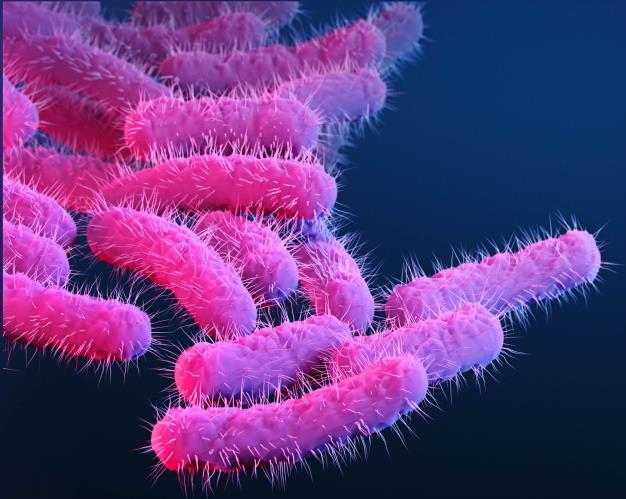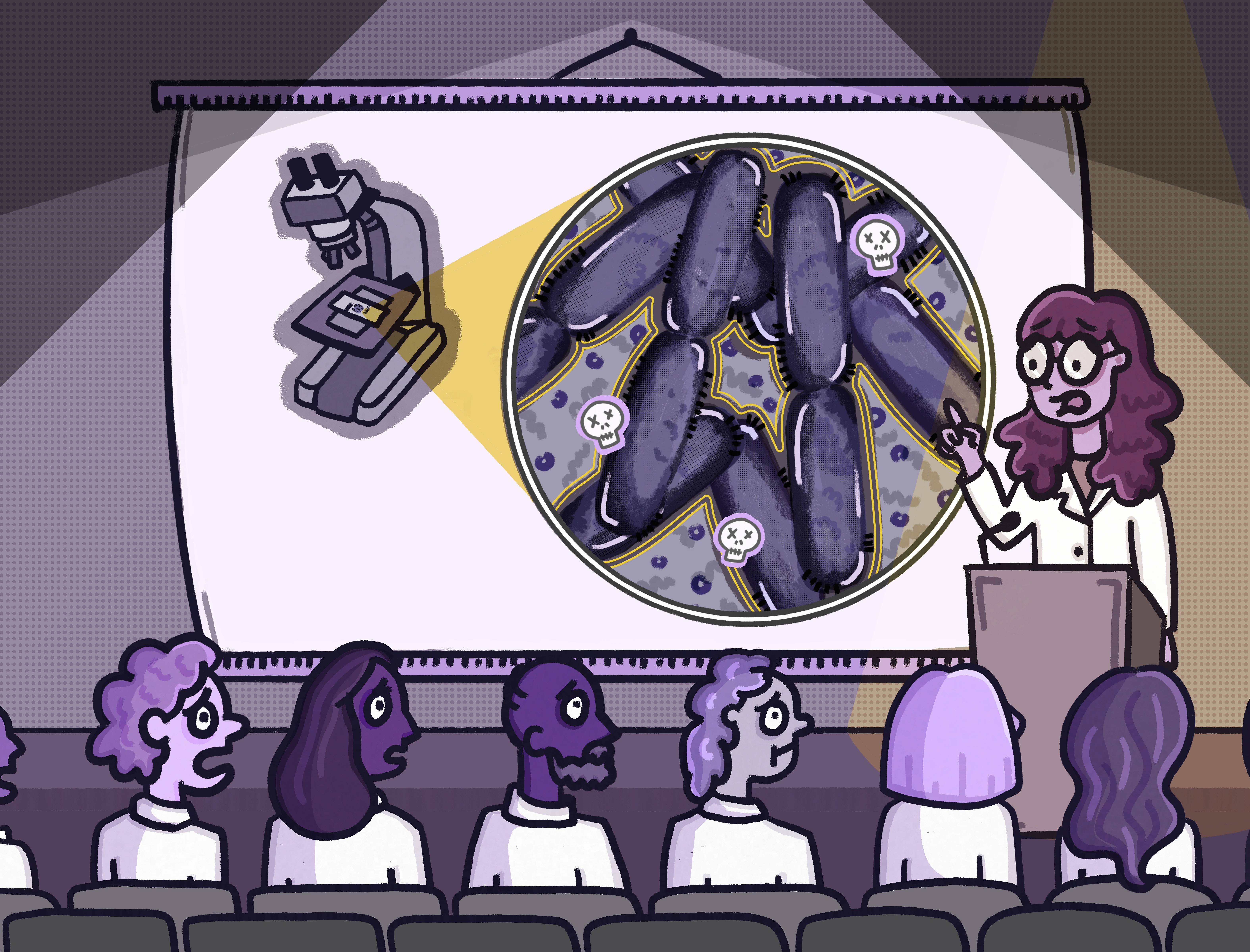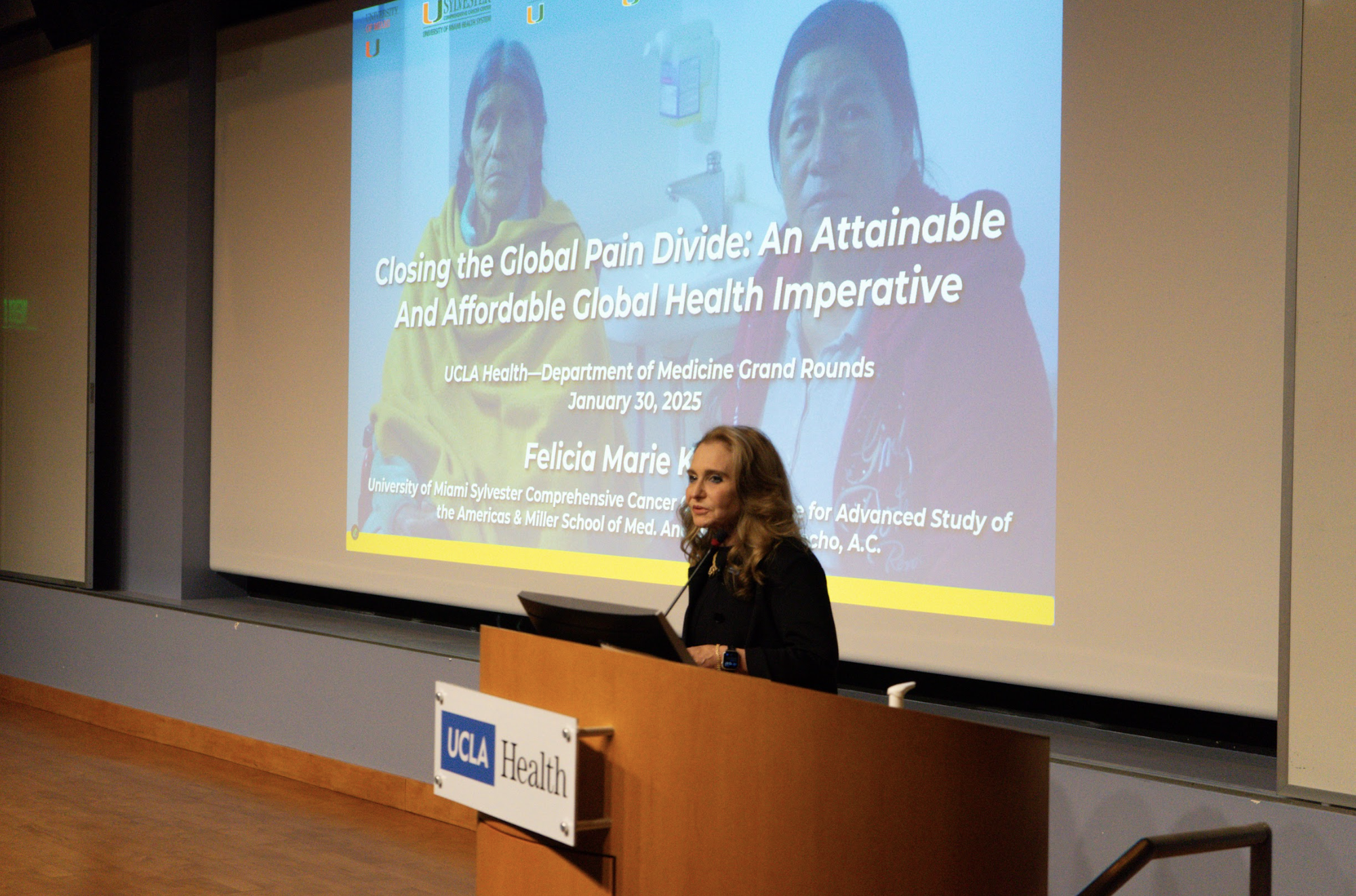Experts talk ways to combat antibiotic-resistant bacteria, protect global health

Shigella bacteria are pictured. Last December, UCLA researchers identified a mutated strain of Shigella that was shown to resist even relatively stronger antibiotics. (Courtesy of Stephanie Rossow/Wikimedia Commons)
By Riya Abiram
Feb. 13, 2025 9:53 p.m.
UCLA researchers identified a new strain of drug-resistant bacteria in a study published last December.
Three patients in Los Angeles County reported symptoms of an intestinal infection caused by Shigella bacteria across three months late last year. Though antibiotics to fight infections caused by Shigella bacteria exist, UCLA researchers found the patients were infected with a mutated strain of the bacteria called Shigella sonnei, which is resistant to relatively stronger classes of antibiotics.
Shaun Yang, director of the Molecular Microbiology and Pathogen Genomics Laboratory at UCLA Health and one of the researchers involved in identifying the strain, said while symptoms of this strain appear relatively mild, its ease of transmission poses a significant risk.
“If you get infected with this Shigella, and if that happened to develop an invasive infection – such as a bloodstream infection – then you will have to use … one of the last resorts of antibiotics we use to treat infections,” Yang said.
Antimicrobial resistance – the phenomenon of bacteria and viruses not responding to antibiotic medication – is a growing issue, according to The Pew Charitable Trusts.
This resistance can develop through various mechanisms, according to the same source. For example, resistance can occur when bacteria adapt in response to antibiotic exposure. Frequent exposure of a bacteria population to an antibiotic can lead to the strengthening of cell walls – preventing the drug from reaching the cell – or production of enzymes that break down the antibiotic.
Additionally, bacteria can become resistant to antibiotics by obtaining copies of resistant genes. This occurs through horizontal gene transfer, a process where genetic material is transferred between bacteria that are not parent and offspring either through direct contact between two organisms or absorption of DNA that dead bacteria have released into the environment. Steven Yang, a doctoral candidate in chemical and biomolecular engineering, said these mechanisms, combined with the rapid replication rate of bacteria, accelerate the development of resistance.
“Bacteria are constantly evolving, so it’s actually very easy for them to acquire antibiotic-resistant traits … because they are multiplying every other 20 minutes or so in a lab environment,” Yang said.
Both the overuse and misuse of antibiotics have significantly worsened the problem of antimicrobial resistance. According to the Centers for Disease Control and Prevention, approximately seven out of 10 outpatient prescriptions dispensed in United States pharmacies were for antibiotics.
Excessive antibiotic prescriptions remain a critical issue in countries such as the U.S. An article published in the journal Pharmacy and Therapeutics found that 30 to 50% of antibiotic treatments involve errors in either drug selection or treatment duration. This problem is particularly prevalent in intensive care units, where 30 to 60% of antibiotics prescribed are deemed unnecessary, inappropriate or suboptimal for the patient’s condition, according to the article.
Tara Vijayan, medical director of the Antimicrobial Stewardship Program at UCLA Health, said multiple factors contribute to the problem.
“The vast majority has to do with antibiotic overuse, whether that is for people who are using antibiotics when they shouldn’t be taking antibiotics or people that are using antibiotics for a longer time than is needed,” Vijayan said.
Additionally, there are not many antibiotics currently on the market or in development that can combat resistant bacteria – only four of the 97 antibiotics currently in development show potential to treat pathogens that the World Health Organization has labeled “critical threats,” according to the WHO.
Compounding the challenge, Steven Yang said large pharmaceutical companies are hesitant to invest in antibiotic development because it offers limited financial incentives. As a result, small pharmaceutical and biotechnology companies as of July 2024 were responsible for 93% of antibiotics undergoing clinical development – which is not sustainable in the long run, according to the WHO.
Failure to address these issues could have severe consequences, research shows. A 2024 study by researchers from the Global Research on Antimicrobial Resistance Project predicted nearly a 70% increase in annual deaths from antimicrobial resistance by 2050, potentially resulting in more than 39 million global deaths in the next 25 years.
Vijayan said developing countries with poor water quality are particularly vulnerable to the effects of antimicrobial resistance.
“Those countries will have a higher incidence overall of a lot of communicable diseases,” Vijayan said. “If we run out of treatment options for those things that are very highly communicable, then we’re going to lose a lot of people to things that at one point could have been treated.”
Ongoing research is addressing antibiotic resistance.
A behavioral study conducted in 2016 demonstrated that simple interventions could be effective in reducing unnecessary prescriptions. For example, showing clinicians how their antibiotic prescription rates compared to peers with lower rates or asking clinicians to justify each prescription reduced unnecessary antibiotic use, according to the study.
Aside from interventions for clinicians, the Pioneering Antimicrobial Subscriptions to End Upsurging Resistance Act proposed in Congress in 2023 aims to provide subscription-style payments to pharmaceutical companies for approved antibiotics, ensuring a predictable financial incentive. Though the law has not been enacted, there have been continuous efforts from health organizations to push for its passage. Globally, proposed strategies such as transferable exclusivity vouchers – which provide extended legal protection on the sales of a company’s other drugs if it develops a new antibiotic – may give financial motivation to pharmaceutical companies, according to a 2020 article in the journal Clinical Infectious Diseases.
While initiatives work to curb antimicrobial resistance, Shaun Yang said existing consequences of antibiotic overuse have already fundamentally altered the world’s bacterial makeup.
“Our new nature in our environment is that all these pathogens become more drug-resistant, and we do not have enough drugs,” Yang said. “It’s impossible to reverse it, (but) we might do something to mitigate, to slow down this process.”





